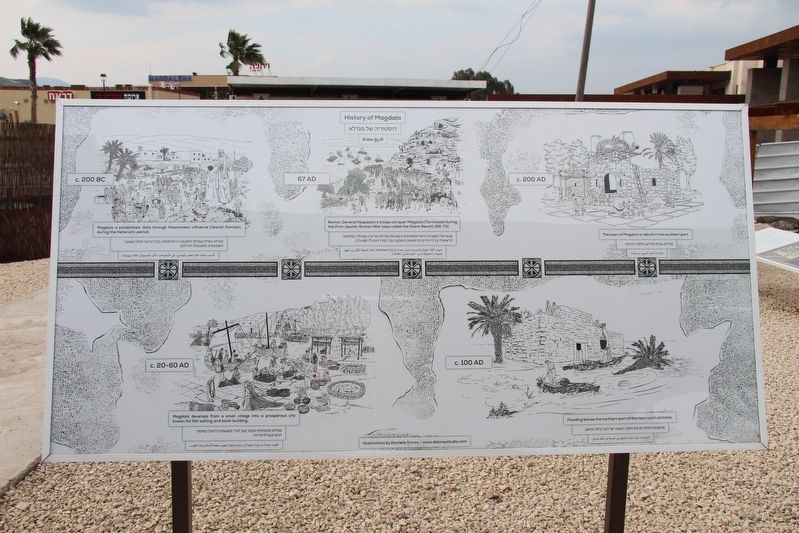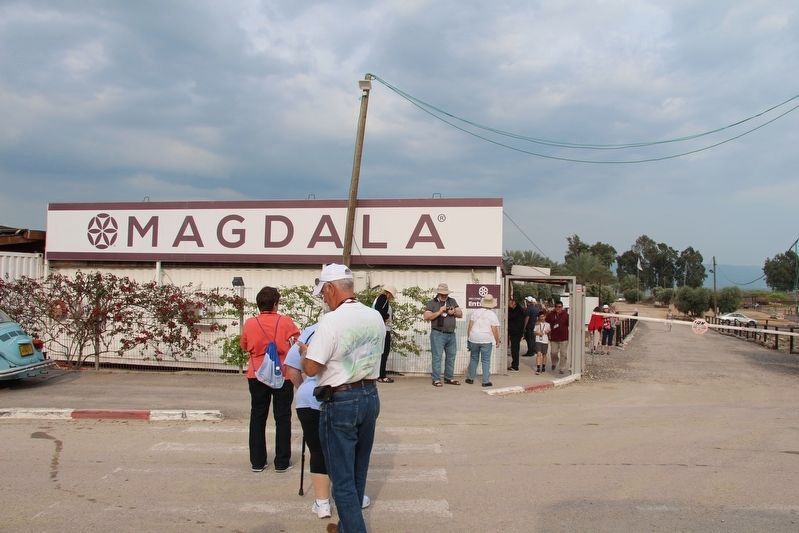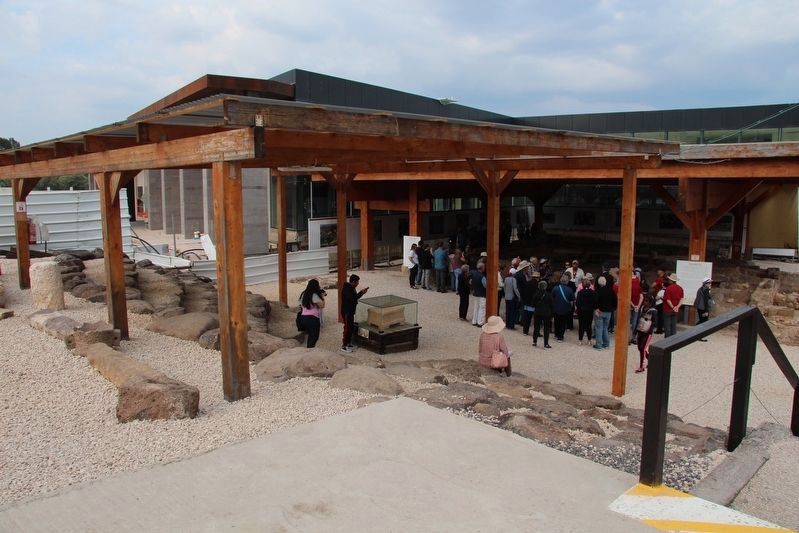Near Migdal, Northern District, Israel — West Asia (the Levant in the Middle East)
History of Magdala
c. 200 BC / c. 20-60 AD / 67 AD / c. 100 AD / c. 200 AD
c. 200 BC
Magdala is established, likely through Hasmonean influence (Jewish families), during the Hellenistic period.
c. 20-60 AD
Magdala develops from a small village into a prosperous city known for fish salting and boat building.
67 AD
Roman General Vespasian's troops conquer Magdala (Taricheae) during the First Jewish-Roman War (also called the Great Revolt)(66-73).
100 AD
Flooding leaves the northern part of the town uninhabitable.
c. 200 AD
The town of Magdala is rebuilt in the southern part.
Topics. This historical marker is listed in these topic lists: Anthropology & Archaeology • Settlements & Settlers.
Location. 32° 49.619′ N, 35° 30.795′ E. Marker is near Migdal, Northern District. Marker can be reached from Northern District Route 90 just east of Northern District Route 807, on the right when traveling north. This marker is located in the midst of the archaeological ruins at the Magdala archaeological excavation site. Touch for map. Touch for directions.
Other nearby markers. At least 8 other markers are within walking distance of this marker. A different marker also named History of Magdala (here, next to this marker); The Migdal Synagogue (a few steps from this marker); Market (within shouting distance of this marker); House of Miqwa'ot (within shouting distance of this marker); Magdala's Hall of Fame (within shouting distance of this marker); a different marker also named House of Miqwa'ot (within shouting distance of this marker); Domestic Housing Area (about 90 meters away, measured in a direct line); Discoveries at Magdala (about 120 meters away). Touch for a list and map of all markers in Migdal.
More about this marker. This marker is located in the Magdala archaeological excavation site, in the ruins of the ancient Jewish village. It is my impression that these ancient Jewish ruins are very significant in both the historical and archaeological record of ancient Judaism, because several of the artifacts and structural elements that were found in the ruins of this village are now on display in the Israel Museum in Jerusalem. Magdala is also part of the Biblical record, being a site that was visited by Jesus, as mentioned in Matthew 15:39.
The illustrations that were drawn on this marker were done by Danielle Storey of www.dstoreystudio.com
Credits. This page was last revised on October 12, 2019. It was originally submitted on October 12, 2019, by Dale K. Benington of Toledo, Ohio. This page has been viewed 126 times since then and 16 times this year. Photos: 1, 2, 3. submitted on October 12, 2019, by Dale K. Benington of Toledo, Ohio.


